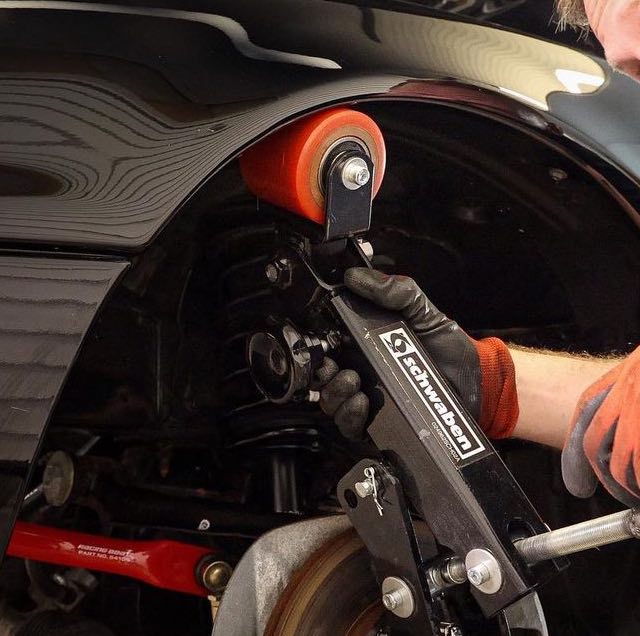Rolling your Jeep’s fenders can be done for aesthetic and functional purposes. Whether you’re looking to give your Jeep a more aggressive look or need extra clearance for larger tires, rolling the fenders of your Jeep may be necessary. Rolling a Jeep’s fender involves removing excess material from the wheel well area to create more room and ensure proper fitment and clearance when installing larger aftermarket tires. It’s important to understand the basics of rolling fenders before attempting any modifications on your own-doing so can help to avoid any costly mistakes or potential safety hazards. In this article, we’ll look in-depth into what exactly rolling fenders in Jeeps entails, why it should be done, the tools needed for this job, and how best to complete it yourself. With a better understanding of what’s involved in this process, you can decide whether it’s right for you and your Jeep.
What Is Rolling Fenders in Jeeps?

Benefits of Rolling Fenders in Jeeps
The primary benefit of rolling your Jeep’s fender flares is improved fitment with larger aftermarket wheels and tires. Increased clearance between your vehicle body and the tire can also help reduce potential damage from rubbing or scraping against each other when cornering sharply or hitting bumps on off-roading trails. Rolling your Jeep’s fender flares can also give it a more aggressive look and improved aerodynamics due to less contact with air at higher speeds than stock flares. In addition, removing excess material from around the wheel wells can also help improve suspension performance due to less weight being supported by springs when driving on bumpy terrain or over obstacles. Also read about the Best Armor Fenders for Jeep JK.
What You Need for Rolling a Fender
To successfully roll a fender, you’ll need a few essential tools and supplies. Firstly, a fender roller is indispensable – it’s a specialized tool designed for this task, allowing you to reshape the fender’s inner lip without damaging the paint or exterior. Additionally, you’ll require a heat gun to soften the fender’s metal, making it more pliable during the rolling process. Masking tape or plastic wrap is crucial to protect the paint from any accidental scratches or dings. Finally, a good set of safety gloves and eye protection is a must to ensure your hands and eyes are shielded from any potential hazards. Having these essentials at your disposal will make the fender rolling process smoother and safer, ensuring your vehicle looks and performs just the way you desire.
Step-by-step Guide to Roll Your Jeep’s Fender Flares
Before beginning the process of rolling your Jeep’s fender, be sure to read through this guide completely and take the necessary precautions for safety.
-
Start by parking your Jeep on a flat surface in a well-ventilated area, then pop open the hood and disconnect the battery (this will help prevent any electrical components from being damaged due to high heat).
-
Place a large piece of cardboard underneath each wheel well that you’ll be rolling to catch any potential debris or pieces of metal that may come off during the process.
-
Heat the inner edge of your Jeep’s wheel well with a heat gun. Aim for a temperature of around 300 degrees Fahrenheit, and keep the heat gun moving so as not to overheat any one area; be careful not to let the heat gun come in contact with plastic parts around your vehicle, such as window trim, grille, etc.
-
When the desired temperature is reached (around 300 degrees Fahrenheit), lightly tap down the heated edges with either a roller tool or mallet (depending upon which you choose). This will help form a new shape of the wheel well while making sure that no large dents are created during the process (if using only a mallet, then use light taps instead of heavy/forceful hammers).
-
Test fitment of newly rolled fender flares by placing them back onto the vehicle and seeing if there is enough clearance between tire and body for larger aftermarket tires; if so, then proceed to step 4; otherwise, go back and re-heat/roll until the desired amount of clearance is achieved before proceeding onwards.
-
Reinstall newly rolled fender flares onto the vehicle using all hardware previously removed in the first step (bolts, nuts, screws etc.), ensuring that these parts are tightened down securely so as not to come loose while driving on roads/trails later down the road.
-
After installation is complete, inspect the entire area for any potential damage caused by the rolling process; if anything looks out of place, then it would be best to address these areas before taking off driving; otherwise, you risk doing more damage later down the line due safety hazards that could arise from having improperly installed components on your Jeep Wrangler!
Conclusion
Rolling your Jeep’s fender is a great way to gain additional clearance for larger aftermarket tires and give your vehicle an improved look. Though this task can initially be intimidating, with the proper tools and understanding of how to complete this job, you can enjoy the benefits of rolling your Jeep’s fenders. Remember that rolling fenders should only be done on Jeeps where enough clearance for new tires isn’t achieved through other means, such as wheel spacers or suspension lift kits. If you have any questions along the way, don’t hesitate to ask a professional for help before attempting to roll your Jeep’s fenders on your own.

Add Comment